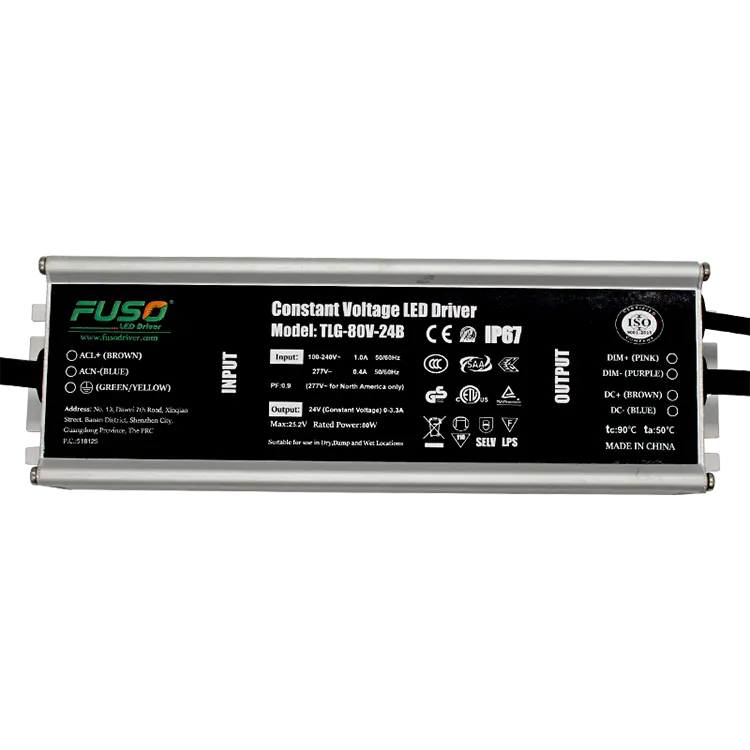Why Is an LED Driver Essential for Your Lighting System?
2024-12-31
When it comes to modern lighting solutions, LEDs (Light Emitting Diodes) have become the go-to choice for both residential and commercial spaces. They are energy-efficient, long-lasting, and offer superior brightness compared to traditional lighting options. However, to make the most out of LED technology, you need the right component: an LED Driver. But what exactly is an LED driver, and why is it so essential for your lighting system?
In this blog, we’ll explore the role of an LED driver, why it’s necessary, and how to choose the right one for your needs.
What Is an LED Driver?
An LED Driver is an electrical device that regulates the power to an LED or a group of LEDs. Unlike traditional light bulbs that can operate directly on standard AC (Alternating Current) voltage, LEDs require a constant current or voltage for proper functioning. This is where the LED driver comes in—it converts the AC power from your electrical supply into a consistent DC (Direct Current) output that the LEDs can use.
LEDs also require a specific voltage and current to operate efficiently, so an LED driver ensures that the lighting system performs optimally without any flickering, overheating, or premature failure.
Why Do You Need an LED Driver?
1. Voltage Regulation
LEDs are sensitive to voltage fluctuations. If they receive too much or too little voltage, they can malfunction, suffer reduced lifespan, or even burn out. An LED driver regulates the voltage supplied to the LED, ensuring a stable and consistent flow of power. This regulation is crucial for maintaining the brightness and longevity of your LEDs.
2. Energy Efficiency
One of the biggest advantages of LEDs is their energy efficiency. However, an unregulated power supply could lead to inefficient operation, causing unnecessary energy consumption. An LED driver optimizes energy usage by providing the exact amount of current the LED needs, helping you maintain the energy-saving benefits of LEDs. With an efficient LED driver, you ensure that your lighting system uses the least amount of power while delivering maximum brightness.
3. Dimming Capabilities
Many modern LED drivers come with dimming functionality, allowing you to adjust the brightness of your lights according to your needs. This is particularly useful in spaces where ambient light needs to be controlled, such as living rooms, kitchens, or office spaces. A compatible dimmable driver makes it possible to create different lighting atmospheres while maintaining energy efficiency.
4. Safety and Protection
LEDs are sensitive to factors like heat, voltage spikes, and overheating. A good-quality LED driver is designed to protect the LED lights by providing built-in safety features such as:
- Overcurrent protection: Prevents the LED from drawing too much current, which can lead to overheating and damage.
- Thermal protection: Ensures that the LED driver operates within safe temperature limits, reducing the risk of fire hazards.
- Short circuit protection: Protects the driver and the LEDs from power surges that could occur due to a short circuit.
Without a driver, these protection measures would be difficult to implement, making the entire lighting system more vulnerable to failure.
5. Extended LED Lifespan
LEDs are known for their long lifespan, but they can’t reach their full potential without the right driver. An efficient and high-quality driver helps to ensure that the LED operates under optimal conditions, preventing premature aging and failure. Properly regulated current and voltage help to maintain the LED’s performance, leading to a longer-lasting lighting solution.
How Do You Choose the Right LED Driver?
Choosing the right LED driver is crucial for ensuring the longevity and efficiency of your lighting system. Here are a few factors to consider when selecting an LED driver:
1. Type of LED
Different LEDs have different power requirements, so it's important to match the driver with the type of LED you are using. Some LEDs need a constant current, while others require a constant voltage. Be sure to check the specifications of your LED lights and choose a driver that is compatible with them.
2. Power Rating
LED drivers come in various wattages to accommodate different power needs. Make sure the driver’s power rating matches the total wattage of the LEDs in your system. If you're using multiple LEDs, the total wattage of the system should be equal to or less than the output power of the driver.
3. Dimming Features
If you require adjustable brightness, make sure the LED driver supports dimming. Dimmable LED drivers are typically labeled as “dimmable” or “triac-dimming compatible.” If you want smooth and flicker-free dimming, look for drivers specifically designed for these purposes.
4. Efficiency
The efficiency of the LED driver directly impacts how much energy is lost during power conversion. A highly efficient driver will minimize power wastage and help you save on electricity bills. When selecting a driver, check for certifications like Energy Star or IEC 62368, which ensure the driver meets high energy-efficiency standards.
5. Size and Mounting Options
LED drivers come in different sizes and mounting styles. Make sure the driver fits your intended installation space. For example, if you’re integrating the driver into a recessed lighting fixture, you’ll need a compact driver that fits inside the fixture.
6. Environmental Conditions
If the LED system is used outdoors or in environments with extreme temperatures, it’s important to choose a driver that can handle those conditions. Look for drivers that are rated for outdoor use or for operating in high/low temperature environments.
Conclusion
An LED Driver is more than just a simple power supply—it’s an essential component that ensures your LED lights operate safely, efficiently, and for a long time. From voltage regulation to dimming capabilities, an LED driver plays a crucial role in maximizing the benefits of LED lighting. Whether you are installing lighting in your home, office, or commercial space, selecting the right LED driver is key to maintaining optimal performance and energy efficiency.



